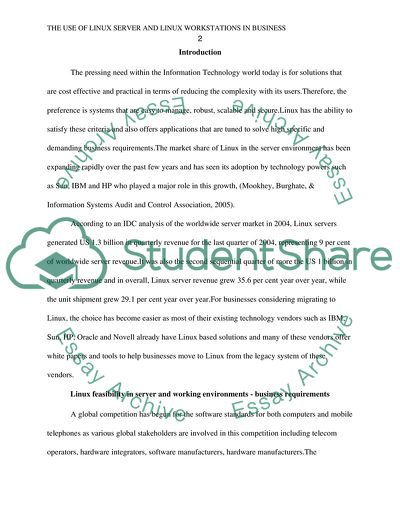Cite this document
(The Use of Linux Server and Linux Workstations in Business Case Study Example | Topics and Well Written Essays - 2000 words, n.d.)
The Use of Linux Server and Linux Workstations in Business Case Study Example | Topics and Well Written Essays - 2000 words. https://studentshare.org/information-technology/1806434-linux
The Use of Linux Server and Linux Workstations in Business Case Study Example | Topics and Well Written Essays - 2000 words. https://studentshare.org/information-technology/1806434-linux
(The Use of Linux Server and Linux Workstations in Business Case Study Example | Topics and Well Written Essays - 2000 Words)
The Use of Linux Server and Linux Workstations in Business Case Study Example | Topics and Well Written Essays - 2000 Words. https://studentshare.org/information-technology/1806434-linux.
The Use of Linux Server and Linux Workstations in Business Case Study Example | Topics and Well Written Essays - 2000 Words. https://studentshare.org/information-technology/1806434-linux.
“The Use of Linux Server and Linux Workstations in Business Case Study Example | Topics and Well Written Essays - 2000 Words”. https://studentshare.org/information-technology/1806434-linux.


